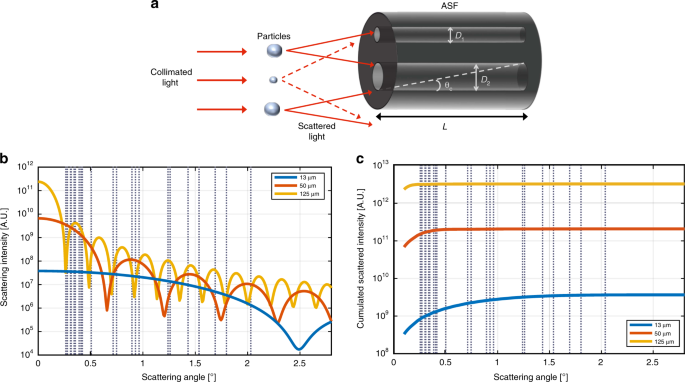Unlock Precision: The Ultimate Guide to Optical Fibre Diameter Analyser Devices
Precise dimension of optical fibre size is crucial for boosting the efficiency and dependability of fiber optic systems. As we analyze these tools, it comes to be obvious that the future of optical fiber evaluation is evolving swiftly, elevating concerns regarding exactly how these developments will certainly affect the sector.
Importance of Optical Fiber Measurement
Properly determining optical fiber diameter is essential in guaranteeing optimum efficiency and integrity in communication systems. The diameter of optical fibers directly effects their light transmission abilities, influencing bandwidth, attenuation, and general signal honesty. An accurate measurement is important to keep the wanted requirements for different applications, including telecoms, data transmission, and sensing modern technologies.
Inaccurate or irregular fiber sizes can lead to increased losses and reduced effectiveness, eventually compromising the efficiency of the whole interaction network. Furthermore, variants in diameter can trigger problems in splicing and linking fibers, bring about greater operational expenses and prospective system failings. Implementing strenuous dimension procedures is vital.

Sorts Of Size Analyser Devices
To achieve trusted optical fibre measurements, various diameter analyser devices are employed, each made to satisfy details measurement demands and applications (optical fibre diameter analyser). These tools can be generally categorized into 3 primary types: handbook, semi-automated, and fully automated analyzers
Manual size analyzers are generally utilized in smaller sized operations or laboratories where precision is required yet manufacturing quantity is low. They use operators straight control over the dimension procedure, permitting cautious adjustments and confirmations.
Semi-automated size analyzers boost efficiency by combining hands-on input with automated features. These tools usually include easy to use interfaces that simplify the measurement procedure while still enabling driver oversight.
Totally automated diameter analyzers stand for the pinnacle of dimension innovation. These advanced systems incorporate advanced sensors and software application to supply real-time dimensions with very little customer treatment. They are perfect for high-volume production atmospheres, making certain consistent precision and fast data collection.
Each sort of size analyser serves distinctive operational requirements, making it essential for users to very carefully evaluate their particular demands when selecting the appropriate tool for optical fiber measurement.
Trick Functions to Consider
When picking an optical fiber size analyser, a number of vital features warrant cautious factor to consider to guarantee optimum performance and integrity. Dimension precision is critical; appearance for tools that provide his comment is here high-resolution analyses, preferably in micrometers, to ensure precision in diameter assessment. Furthermore, the speed of measurement is important, particularly in manufacturing settings where performance is crucial.
Another essential feature is the calibration process, as a trusted analyser ought to give simple calibration procedures to keep measurement stability over time. The range of sizes the device can measure is likewise substantial; make certain that it fits the certain fiber kinds relevant to your applications.
Portability may be a consideration, particularly for fieldwork; light-weight and small designs improve usability in numerous setups. In addition, user-friendly user interfaces and software program compatibility can facilitate smoother procedure and information evaluation.
Last but not least, take into consideration the support and guarantee offered by the producer; reliable go to the website customer care and extensive guarantee options can safeguard your investment and make certain long-lasting contentment. By concentrating on these functions, you can select an optical fiber diameter analyser that fulfills your details needs and improves your functional capabilities.
Finest Practices for Use
Efficient usage of optical fiber diameter analysers depends upon a detailed understanding of ideal techniques that improve measurement integrity and accuracy. Make sure that the analyser is calibrated properly before each use. Calibration versus recognized criteria minimizes prospective errors and establishes a baseline for succeeding measurements.
Second, maintain a clean atmosphere. Dirt, dampness, or pollutants on the analyser or the fibre's lenses can alter outcomes. Routinely evaluate and cleanse both the fibre and the equipment to maintain optimal performance.

In addition, carry out dimensions at constant temperatures and moisture levels, as ecological aspects can affect outcomes. Document each measurement thoroughly, noting conditions and any type of abnormalities run into throughout the procedure.
Future Trends in Optical Fibre Analysis
As the need for high-performance optical fibres continues to climb, advancements in evaluation strategies are readied to change the market (optical fibre diameter analyser). Future fads in optical fiber analysis will likely be driven by increased automation and the combination of fabricated intelligence (AI) and artificial intelligence (ML) modern technologies. These technologies promise to like this enhance information accuracy, minimize evaluation time, and enable real-time surveillance of fibre top quality
Additionally, the development of portable and straightforward analysis tools will certainly facilitate on-site analyses, permitting higher versatility and performance in manufacturing settings. Enhanced imaging technologies, such as high-resolution imaging and spectral evaluation, are anticipated to provide much deeper insights into fiber attributes, allowing makers to enhance their procedures further.
In addition, as industries increasingly accept sustainability, there will certainly be a promote eco-friendly materials and approaches in optical fiber production. This change will necessitate new logical techniques to examine the efficiency and long life of these materials under differing conditions.
Final Thought
Accurate measurement of optical fiber diameter is necessary for optimizing efficiency and making sure dependability in communication systems. Continued technology will even more boost the precision and effectiveness of optical fibre evaluation.
Accurate measurement of optical fiber diameter is important for enhancing the performance and reliability of fiber optic systems. In an increasingly connected globe, where high-speed data transmission is vital, the function of exact optical fiber diameter measurement can not be overstated, as it offers as the structure for robust communication framework.When selecting an optical fiber diameter analyser, numerous crucial functions necessitate careful factor to consider to ensure optimum efficiency and reliability.Reliable usage of optical fibre size analysers pivots on a comprehensive understanding of best methods that boost measurement integrity and precision.Exact dimension of optical fiber diameter is crucial for enhancing performance and guaranteeing reliability in interaction systems.